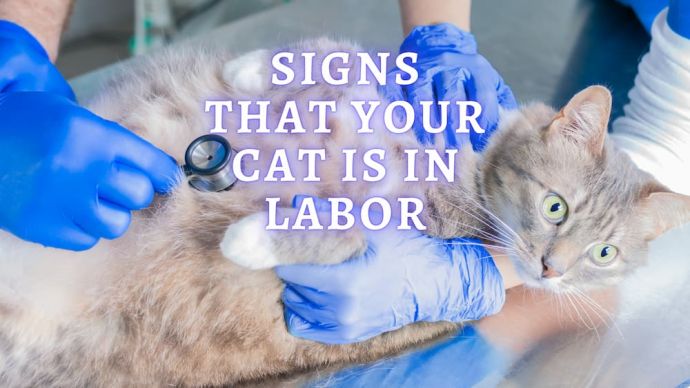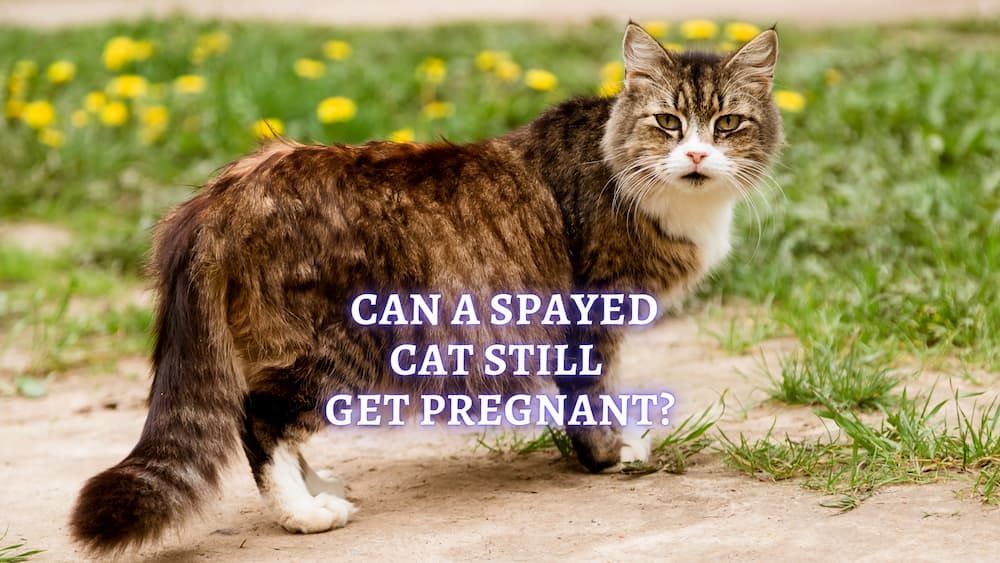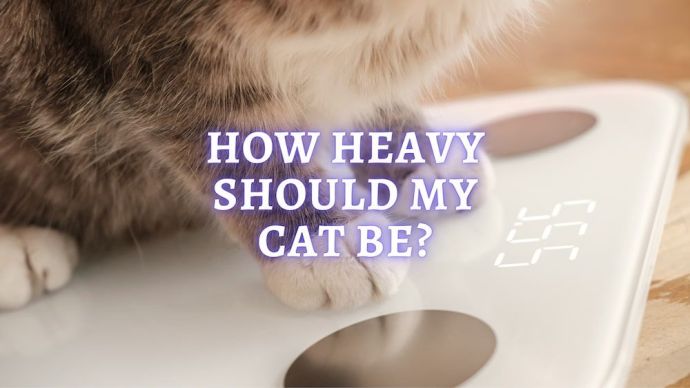Can a Cat get Pregnant after being Spayed?
Written by:
Author: Alina Andreeva
Alina A. is a professional writer, editor, and pet-lover. She has published over 50 articles on how to care for pets properly. Alina has been writing articles for 3 years, so she has considerable experience in this niche. Her natural curiosity helps her to expand her knowledge and learn new pet care life hacks, which will make your life much easier.
View all 79 articlesLearn about our editorial process and veterinary review board.
Reviewed by:
Veterinary review
by Dr. Linda Simon
Dr. Linda Simon is a veterinary surgeon working with seven years of experience. She is a fellow of the British Veterinary Association and specializing in animal medicine. Also, she has been the Woman magazine resident vet for the past two years and writes a regular column for them, focusing on pets and their health.
View all 30 articlesLearn about our veterinary review board
Viewed: 20177
Updated on: 01/06/2023
Biologically, if a cat has been spayed correctly, it should not be able to go into heat (oestrus) or get pregnant. However, if your furry friend is fixed, there are rare cases when felines may behave like it is breeding season. This can happen for several reasons. If you notice your spayed cat is showing signs of being in oestrus, contact your veterinarian.
What to do if my Spayed Cat is Pregnant?
In this scenario, there has been some mistake. If you had acquired your cat and were told they were spayed, your feline friend might never have had the operation. We sometimes see this after a cat has been rescued from a shelter. Anything can happen in such a place where dozens of sterilizations are performed every day. Your furry friend may just have slipped under the radar. Also, your cuddly companion may not have been spayed at the cat shelter because they thought she was spayed before she was dropped off (especially if a previous owner told them this was the case). In general, mistakes in communication can happen, and nothing can be ruled out. If your cat is really pregnant and is otherwise well, she should likely give birth to healthy kittens.
On rare occasions, your kitty may have had a spay procedure, but only one ovary was removed. Pregnancy is possible if the vet has performed an ‘ovariectomy’ and the uterus is left in.
The best thing you can do in this situation is to schedule a visit with your veterinarian, bring her for a complete physical examination and have an ultrasound scan carried out.[1]
READ MORE: Signs That Your Cat is in Labor
Understanding the Sterilization Procedure
It is important for owners to understand what spaying is and what the procedure entails. Your pet will be operated on under general anesthetic and she will remain unconscious during the whole operation. Your veterinarian will make a small incision in the abdomen wall and then remove the ovaries and (usually) the uterus too. The veterinarian will then sew up incision and will monitor as your kitty wakes up from the anesthetic. Cats will be given pain relief for when they are home and might also be provided with a buster collar to prevent licking. They should be kept indoors and rested for several days. [2] [3] [4]
Can I Hold My Cat After Spaying?
Depending on factors such as your kitty’s age, medical history, and any abnormalities during the surgery, your veterinarian may decide to keep your furry friend in the veterinary hospital overnight. It will allow veterinarians and technicians to keep an eye on your family friend and be close in case she develops any complications. However, many owners will take their pets home on the day of surgery. In this case, give your pet some space as they recover as they may feel a bit fragile. Unless necessary (for example, to put them in or out of their carrier), they shouldn’t be picked up until fully healed.
What is Ovarian Remnant Syndrome in Cats?
Ovarian Remnant Syndrome (ORS) may occur in cats when ovarian tissue remains inside their body after spaying. This tissue can produce estrogen, causing the cat to show signs of going into heat.
In unspayed female cats, the ovaries make hormones, including estrogen. This hormone causes felines to come into heat. During a spay surgery, the ovaries (and sometimes the uterus) are removed. That is why your spayed cat can no longer, produce estrogen, or come into heat.
If a spayed cat displays behaviors typical of heat, this may indicate that some ovarian tissue is still there and making hormones. Remnants of the ovaries may be left behind during the spay surgery, or a small piece of the ovarian tissue, fragmented from the ovary, provides sufficient blood supply to produce estrogen. This is rare.
What are the Symptoms of Ovarian Remnant Syndrome?
The most apparent symptom of ovarian remnant syndrome is when a spayed female cat behaves like she’s in heat. This may happen at any time after spaying with a delay of several months to years.
In felines, the signs of coming into heat are mainly behavioral. Cats may be more vocal than usually (to attract males), be restless, beg to go outside or try to escape at any opportunity. They may also show increased affection to their family. Un-spayed cats usually go into heat seasonally, going through several cycles in the spring and summer.
READ MORE: Why is my Cat Yowling at Night?
How is Ovarian Remnant Syndrome Treated?
This syndrome can be treated surgically: Veterinarians remove the remnants of the ovaries that are causing problems. This surgery should be done when your cat comes into heat to maximize the chances of visualizing the ovarian remnants.
What Happens If Ovarian Remnant Syndrome is Left Untreated?
Female cats with untreated ovarian remnant syndrome are subject to some of the same risks as felines that have not been spayed. The continued presence of estrogen can lead to mammary cancers and ovarian tumors. [5]
Can a Spayed Cat have a Phantom Pregnancy?
In rare cases, female cats may show signs of false pregnancy, also known as a phantom pregnancy or pseudopregnancy, after the spay surgery because of the sudden removal of hormones. Symptoms of phantom pregnancy include changes in behavior and the enlargement of mammary tissue. If you notice that your pet is showing signs of a phantom pregnancy, schedule a visit with your veterinarian. False pregnancy symptoms usually go away without treatment within one to two months.
What are the Symptoms of False Pregnancy?
Symptoms of phantom pregnancy may continue for several months after this condition has been diagnosed. They include:
- Swollen and pink nipples;
- Enlarged mammary glands;
- Nesting behavior such as using paper or blankets to create a nest;
- Carrying around inanimate objects such as toys;
- Excessive affection, depression, or anxiety;
- Swollen abdomen;
- Vomiting;
- Weight gain;
- Loss of appetite;
- Production of milk.[6] [7]
How do you take care of a Cat Showing False Pregnancy Symptoms?
If your kitty is lactating or has swollen mammary glands, you can put cold or warm compresses on her mammary glands. This will help reduce milk secretion and keep her more comfortable. You may need to use an e-collar to prevent your kitty from licking as this can cause lactation to continue. Don’t be tempted to milk the mammary glands to remove the milk as this will stimulate milk production further.
READ MORE: How to tell if your Cat is Sick?
The Bottom Line
If your kitty is spayed, she cannot get pregnant. However, there are rare cases when felines display behaviors typical of heat or pregnancy even after the spay surgery. This may happen because your veterinarian has not removed all of the ovarian tissue. Your furry friend may continue to go into heat and has an increased risk for mammary tumors. After spaying, some cats may have symptoms of phantom pregnancy due to the sudden removal of hormones. Such symptoms usually resolve without treatment within 1-2 months.
Rarely, your furry friend may be spayed, but only one of ovaries is ligated. In this case, we need to perform another surgery to remove any remaining ovarian tissue.
Whatever the case, the best thing you can do is to bring your little one to your veterinarian if they are behaving abnormally.
Article Sources:
- “Cat Pregnancy in a Spayed Female Cat .” Ask The Cat Doctor, 3 Feb. 2016, askthecatdoctor.com/cat-pregnancy-in-a-spayed-female-cat.html.
- Williams, Krista. “Spaying in Cats.” VCA Hospitals, vcahospitals.com/know-your-pet/spaying-in-cats.
- Brooks, Wendy. “Spaying Cats.” Veterinary Partner, 01 Jan. 2001, veterinarypartner.vin.com/default.aspx?pid=19239&id=4951480.
- “Spay/Neuter Your Pet.” ASPCA, aspca.org/pet-care/general-pet-care/spayneuter-your-pet.
- Barnette, Catherine. “Ovarian Remnant Syndrome in Cats.” VCA Hospitals, vcahospitals.com/know-your-pet/ovarian-remnant-syndrome-in-cats. vcahospitals.com/know-your-pet/ovarian-remnant-syndrome-in-cats.
- “False Pregnancy in Cats.” Tri-County Animal Hospital, tricountyah.com/pet-education/pet-false-pregnancy.php.
- Memon, Mushtaq. “Reproductive Disorders of Female Cats.” Veterinary Manual, 1 Aug. 2018, msdvetmanual.com/cat-owners/reproductive-disorders-of-cats/reproductive-disorders-of-female-cats.
 Cat Care Why Is My Cat Always Hungry? Vet-Approved Advice on Dealing With Hungry Cat
Cat Care Why Is My Cat Always Hungry? Vet-Approved Advice on Dealing With Hungry Cat - 348
- 0
 Cat Veterinary Tips Why is my Cat Scratching their Ears? (Veterinary Advice)
Cat Veterinary Tips Why is my Cat Scratching their Ears? (Veterinary Advice) - 1361
- 0
 Cat Care Why Does My Cat Attack My Legs? 10 Reasons Why and What To Do About It (Vet-Approved Advice)
Cat Care Why Does My Cat Attack My Legs? 10 Reasons Why and What To Do About It (Vet-Approved Advice) - 46013
- 21
 Cat Veterinary Tips Cat Stomach Gurgling: Vet Advice on Why is Your Cat Stomach Gurgling?
Cat Veterinary Tips Cat Stomach Gurgling: Vet Advice on Why is Your Cat Stomach Gurgling? - 36469
- 4
 Cat Veterinary Tips My Cat Lost its Voice: Can Cats get Laryngitis? (Vet Advice)
Cat Veterinary Tips My Cat Lost its Voice: Can Cats get Laryngitis? (Vet Advice) - 23554
- 13
 Cat Veterinary Tips Signs That Your Cat is in Labor: How to tell if a Cat is Pregnant?
Cat Veterinary Tips Signs That Your Cat is in Labor: How to tell if a Cat is Pregnant? - 15122
- 1






















